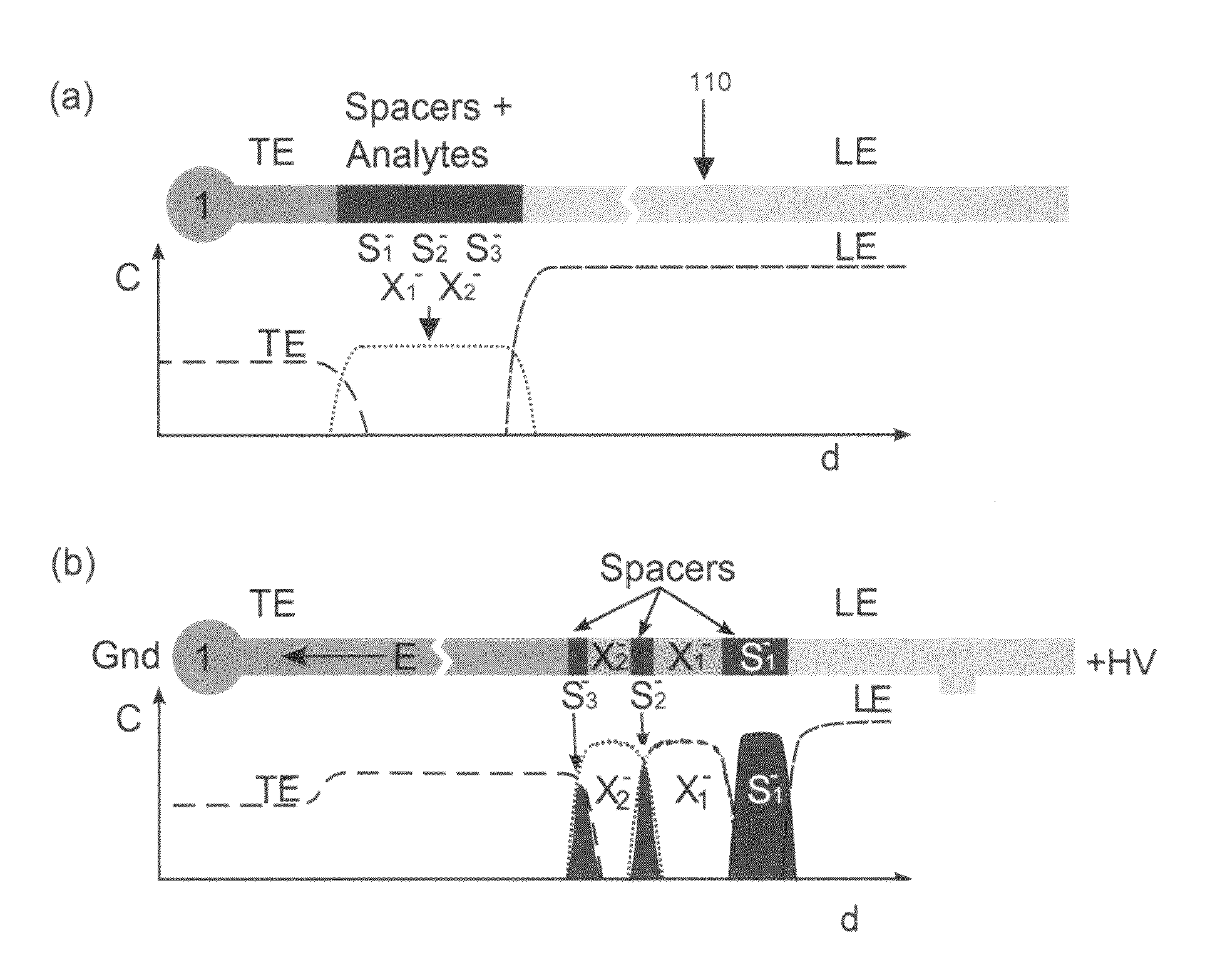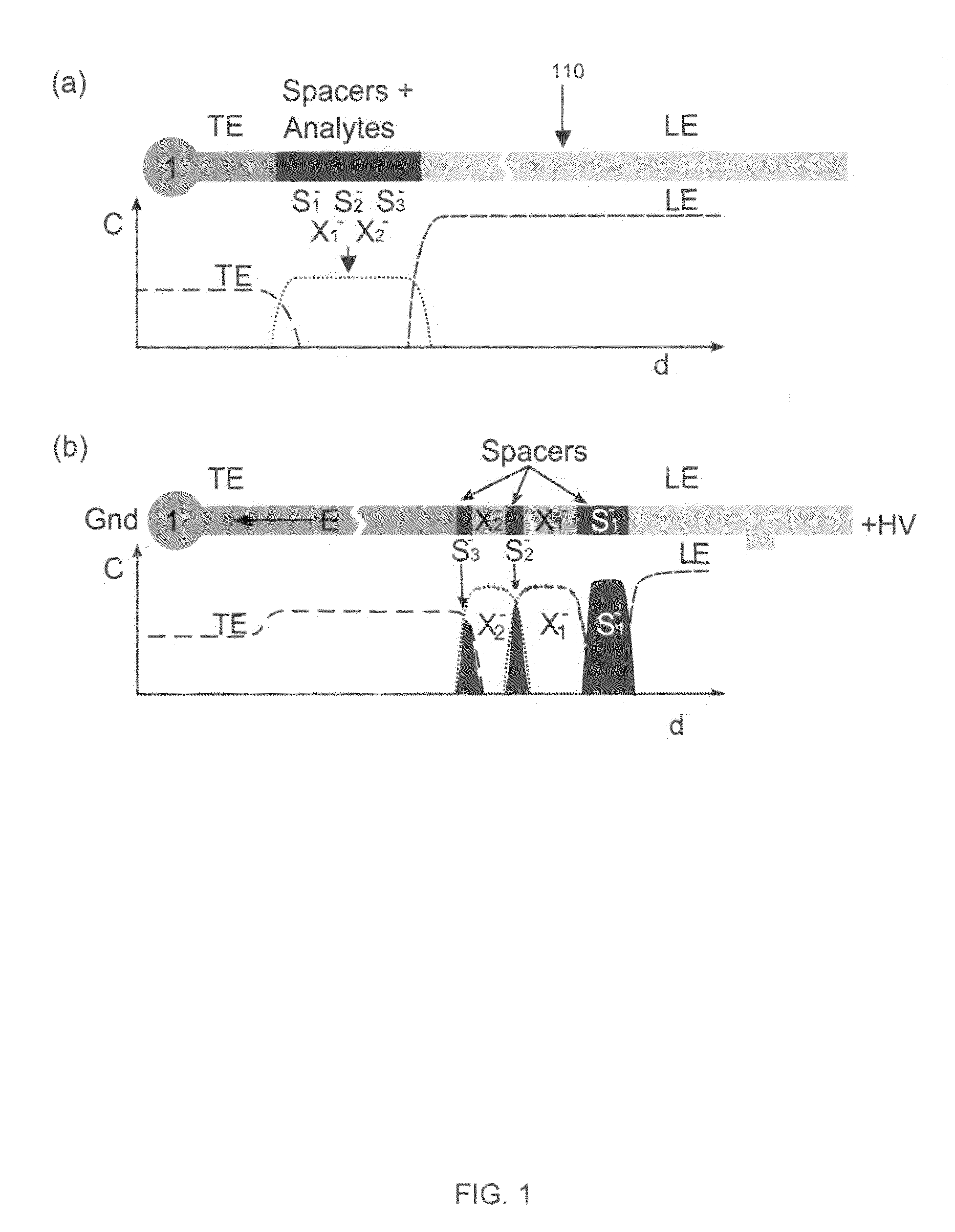Method of detecting directly undetectable analytes using directly detectable spacer molecules
a technology of undetectable analytes and spacer molecules, applied in the field of analyte detection, can solve the problems of not being able to efficiently label all analytes, direct detection of analytes, and traditional indirect detection methods, which do not offer preconcentration ability,
- Summary
- Abstract
- Description
- Claims
- Application Information
AI Technical Summary
Benefits of technology
Problems solved by technology
Method used
Image
Examples
examples
Materials
[0030]We used 350 mM Tris-HCl (titrated to pH 10.2 with sodium hydroxide) as the leading electrolyte and 50 mM sodium tetraphenylborate as the trailing electrolyte. We prepared 50 mM stock solutions of Tris-serine and Tris-phenylalanine to be used as sample analytes. These amino acids have respective pKa values of 9.3 and 9.26. The amino acids, leading and trailing electrolyte reagents were obtained from Sigma Aldrich (St. Louis, Mo.). The fluorescent spacers were Oregon Green carboxylic acid, Fluorescein and Bodipy, and were obtained from Molecular Probes (Eugene, Oreg.). We prepared 10 μM concentration stock solutions of these fluorescent spacers and diluted their final concentration to 50 nM in the analyte-spacer mixture. All solutions were prepared using ultra-filtered deionized water (DIUF) obtained from Fischer Scientific (Fair Lawn, N.J.). The experiments were performed on standard, commercially available borosilicate microfluidic chips with “simple cross” geometry (...
PUM
| Property | Measurement | Unit |
|---|---|---|
| pH | aaaaa | aaaaa |
| pKa | aaaaa | aaaaa |
| pKa | aaaaa | aaaaa |
Abstract
Description
Claims
Application Information
 Login to View More
Login to View More - R&D
- Intellectual Property
- Life Sciences
- Materials
- Tech Scout
- Unparalleled Data Quality
- Higher Quality Content
- 60% Fewer Hallucinations
Browse by: Latest US Patents, China's latest patents, Technical Efficacy Thesaurus, Application Domain, Technology Topic, Popular Technical Reports.
© 2025 PatSnap. All rights reserved.Legal|Privacy policy|Modern Slavery Act Transparency Statement|Sitemap|About US| Contact US: help@patsnap.com



